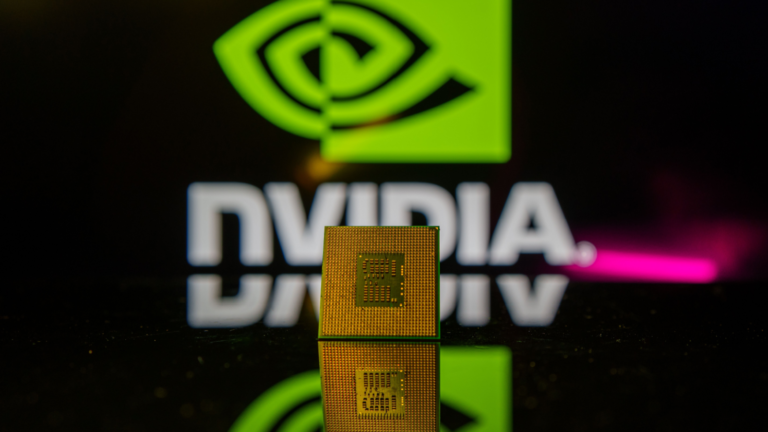Sometimes, markets don’t make much sense. Case in point: Nvidia (NVDA).
The AI poster child just delivered another quarter of record-shattering growth, offered guidance for even more strength ahead, and reminded us all that the AI boom is the biggest capex wave in history. Yet, the stock slid nearly 3% immediately following that update.
If that sounds backwards, that’s because it is. And it’s also why this week’s earnings report should be read not as a red flag, but as a green light for the next leg higher in AI stocks.
Let’s take a closer look.
Nvidia Earnings: The Numbers That Matter Most
First, we’ll separate what Nvidia reported for the second quarter (Q2) from its forward guidance for Q3. They are two different stories – and together, they paint a bullish picture.
In Q2:
- Revenue came in at $46.7 billion, up 56% year-over-year (YoY).
- Data center revenue – the heart of the AI buildout – hit $41.1 billion, also up 56% YoY.
- On a sequential basis, growth slowed to 5% quarter-over-quarter (QoQ), which gave a few traders something to nitpick.
And for Q3 guidance:
- Management anticipates $54 billion ±2% in revenue, excluding China H20 chip sales.
- That’s a monster number: ~55% YoY growth, and ~15- to 16% QoQ growth off an already massive base.
- If China sales were included, guidance could stretch to $56- to 59 billion — implying 60- to 70% YoY growth, and 20- to 26% sequential growth.
Clearly, Nvidia’s earnings report showed continued strength, and its guidance reflected accelerating strength.
So, why did NVDA stock initially drop?
Traders wanted fireworks. They got sparklers.
The expectations bar for Nvidia is sky-high. At a $4 trillion-plus market cap, Wall Street magnifies every hiccup. A slightly slower sequential growth rate in Q2, plus the exclusion of China H20 chips from Q3 guidance, spooked short-term money.
But the fundamentals scream one thing: the AI infrastructure build-out is still going strong.
Jensen Huang’s $4 Trillion AI Bombshell
If you needed more proof, CEO Jensen Huang gave it to you on the company’s conference call.
Therein, he said he expects the world’s largest companies to spend $3- to 4 trillion on AI infrastructure in the next five years and positioned Nvidia to capture as much as 70% of that spend.
Now, let’s pause for a moment. That doesn’t imply just another year or so of strong growth. We are talking about multi-trillion-dollar capital commitments – possibly bigger than the cloud and smartphone build-outs combined. (While this isn’t a simple calculation, Kearney concludes that “The total investment in mobile Internet connectivity infrastructure, averaged over the past five years, is $244 billion annually, including spend on end-user devices.”)
And, of course, those trillions won’t just stop at Nvidia. They’ll filter into the entire AI supply chain: servers, networking, cooling, rare-earth magnets, batteries, robotics, software…
That’s why AI stocks are primed to rally.
AI Capital Cascades From the Top
Coming into this report, Wall Street worried Nvidia’s numbers would show that hyperscale AI spending is slowing.
This earnings report killed that fear.
Nvidia anticipates $54- to $59 billion next quarter, confirming 55- to 70% YoY growth at scale.
Hyperscalers are still spending aggressively. Sovereign AI budgets are ramping. Enterprises are just beginning their adoption cycle.
If this titan’s growth is intact, the AI boom is, too.
That’s bullish for:
- Semiconductors and Foundries – AMD (AMD), Broadcom (AVGO), Marvell (MRVL), Taiwan Semiconductor (TSM): Every new GPU rack requires networking chips, accelerators, and advanced manufacturing at scale. Nvidia’s forecast implies years of record wafer demand and chip innovation.
- Servers, Storage, and Networking Gear – Super Micro (SMCI), Dell (DELL), Arista Networks (ANET), Cisco (CSCO): Trillions in AI investment translates directly into a wave of orders for high-density servers, low-latency switches, and enterprise networking solutions.
- Power and Cooling Infrastructure – Vertiv (VRT), Eaton (ETN), Trane (TT): The AI datacenter buildout is power-hungry and thermally intensive. Sustained hyperscaler capex means record demand for cooling, electrical infrastructure, and energy-efficient retrofits.
- AI Software Platforms – Palantir (PLTR), Snowflake (SNOW), C3.ai (AI): A massive hardware expansion unlocks exponential growth in AI workloads, analytics, and enterprise AI adoption, driving software and data-platform spend.
- Physical AI and Robotics Supply Chain – Tesla‘s (TSLA) Optimus, Agility Robotics, MP Materials (MP), USA Rare Earth (USAR): the push toward agentic AI and robotics accelerates demand for sensors, actuators, and critical minerals powering this next industrial wave.
When Nvidia says the AI boom is alive and well, it’s not just bullish for Nvidia. It validates the entire supply chain: semis, servers, infrastructure, software, and the physical AI frontier.
From Fear to FOMO: The Sentiment Reset to Precede an AI Rally
Heading into this report, fear was building: what if the AI trade has peaked? What if capex slows?
Instead, we learned the opposite is true.
That’s the kind of sentiment reset that flips cautious positioning into aggressive buying. Hedge funds that minimized their AI exposure will unwind. Retail investors once waiting for a dip will chase. Portfolio managers underweight AI will scramble to re-balance.
It’s a classic setup: clear the hurdle, reset sentiment… ignite the rally.
If you want exposure to the largest capex cycle in history, we think this is it.
And as we’ve mentioned, the story doesn’t stop with data centers or chips. The same forces driving hyperscale AI adoption are now spilling into the physical world – ushering in the next frontier of this cycle: robotics and physical AI.
We’ve arrived at the point where factory automation, warehouse bots, and humanoid systems like Tesla’s Optimus are stepping into commercial use.
And just as Nvidia’s trillion-dollar wave spills into servers, cooling, and chips, this robotics surge will cascade into the suppliers making the sensors, actuators, rare-earth materials, and embedded systems that power the machines themselves.
Don’t just watch the robots take center stage – position yourself in the companies building the parts that make them move.


